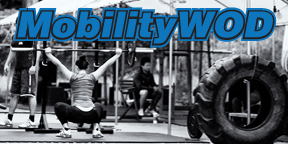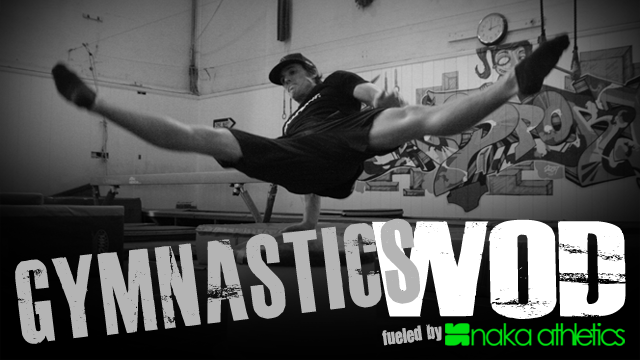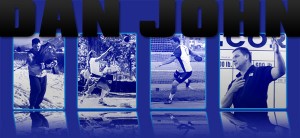18
May / 11
Toeing the Line
Categories: Lifting, Workout of the Day
posted by: Sean
Quite often we are asked why we encourage most of you to squat with your feet turned out. One reason is because many of you follow Kelly Starrett’s MWOD, and you hear him encourage athletes to work on squatting with toes/feet forward. Well, if you’re like me and confused on which one to do I’ll highlight the argument for both and the Intrepid coaching staff will work with you to figure out which stance works best for you. Much of the information I’ll discuss comes either from Kelly Starrett’s MobilityWOD and this article by Greg Everett of Catalyst Athletics.
K-Star is a big advocate of keeping the toes/feet pointed straight forward or perhaps a very subtle turnout not more than 7 degrees as this maximizes torque and power production in the hip while maintaining stability in the knee. He states that the severity of injury is reduced because the rotational force on the knee is less if and when position is lost. When squatting with the toes/feet turned outward, if the athlete loses proper position the knees tend to drop inward creating a valgus (twisting) force in the knee that can cause ACL and other connective tissue injury if the force is large enough, or create knee issues over time if the movement pattern persists. K-Star also states that squatting should prepare athletes for optimal jumping and landing position which coincidentally is with the toes/feet forward, and having the toes/feet turned out increases the chances of faulting to the improper position discussed above with the knees buckling in.
Greg Everett asks the question what are the underlying reasons one squats with their toes/feet turned out. The first, and the reason you’ve probably heard many coaches cite, is to match the direction of the thighs allowing the knees to track over the toes. The second, and far less desirable, reason people squat with their toes out is because of a lack of range of motion typically in the ankle, hip adductors, and/or hip internal rotators. In order to progress past a certain depth the athlete has to excessively turn their toes/feet out and roll onto the inside edges of the feet (think flattening the arch of the foot) to squeeze out a few extra inches of depth compromising knee position and increasing the valgus force on the knees. So why not just squat with the feet forward and knees forward? Well, in order to get the hips to flex maximally and get deep into the squat some external rotation of the hip is necessary while allowing proper spinal extension. The degree of hip external rotation will vary from person to person depending on many variables including anatomy, and Everett suggests matching the toe/foot turn out angle to the angle of hip external rotation to allow the knee to hinge properly. This all assumes that an athlete’s stance is some close to shoulder width apart however because once the stance goes too wide the knees have no choice but to fall in. Everett goes more in depth on comparing squatting for Olympic weightlifting and powerlifting in the article as well. He cites that the majority of top Olympic weightlifters around the world squat with their toes turned out and rarely suffer from ACL injuries despite the ballistic nature of their sport.
In regards to the point made by K-Star on squatting should encourage proper positioning for jumping and landing, i.e. with toes forward, Everett offers the perspective that gym training does not and cannot perfectly mimic play on the field/court. In his perspective, and I agree, that strength training is to develop basic athletic qualities not finer sport specific motor patterns. The latter is his opinion is best left to be learned, developed, and practiced on the field of play. He also notes that the stance and depth of jumping and landing is different that that of squatting, as the athlete’s stance is typically narrower and the depth much shallower that squatting and therefore would not require the same degree of hip external rotation and toe/foot turnout.
In the end, I feel it’s important to understand both perspectives but I’ll leave you with this thought that Greg Everett used to wrap up his article:
“…there’s a difference between training in a manner that prevents injury and one that plans for failure. I prefer the former. In other words, train wisely and safely for success rather than modifying your training to prepare you for impending doom.
Squat in the way you believe and demonstrate to be the safest and most effective for you, and teach your athletes to do the same.”
Today you’ll have the opportunity to experiment a bit with the positioning of your toes/feet as we’ll be performing back squats as part of the WOD. Use your warm up sets to try a few squats with the toes/feet more forward and to see how it feels. As always ask your coach to keep an eye on your form if you have concerns questions. However goes with what feels most stable and puts you in the best position by the time you reach your work sets.
WOD 05.18.11
Back Squat 3×5 or Wendler
10, 9, 8,…,1
KB Clean & Jerk
KB Swings
Goblet Squats


 310.465.6565
310.465.6565 




















3 Responses to “Toeing the Line”
Al
May 18, 2011 at 7:12 PM
So cool that you posted about this today. I was listening to Robb Wolf’s podcast yesterday and he and Greg (who, in case you haven’t listened lately, is now Robb’s co-host on the show which makes for very interesting and entertaining discussion between the two)were discussing this very topic.
They said that K-Star’s concern with the toes out is more the fact that when people squat that way constantly through all bilateral squatting variations like back squats, front squats, air squats, medball cleans, wallballs, etc., that becomes their default foot position for everything else. You see it a lot with people letting the knees track in upon landing at the top of box jumps ending with the dangerous valgus knee. They suggested combating this tendency by mixing things up and adding some unilateral squatting (lunges, bulgarian split squats) variations and sprinting, sled pushing and pulling into your training as well. All of these variations are performed with the foot forward and take folks out of that toed out position. This will ensure a more athletic and safe toe forward stance when running and jumping.
Lucky for all you Intrepids you guys have smart trainers who already cover all those bases.
Sean
May 18, 2011 at 9:15 PM
Makes sense Al. Thanks for sharing. I have to start listening to his podcasts more often.
jeff
May 19, 2011 at 5:45 AM
I see more patellar knee tendon pain associated with straight toes / feet because their knees tend to get to far forward of the foot. We use the the toes out to help open the knees and then get the kids to sit in a squat more efficiently. It seems that when they do that the squat locks into a parallel squat more efficiently???? food for thought article looks like a thesis in the making!!!!